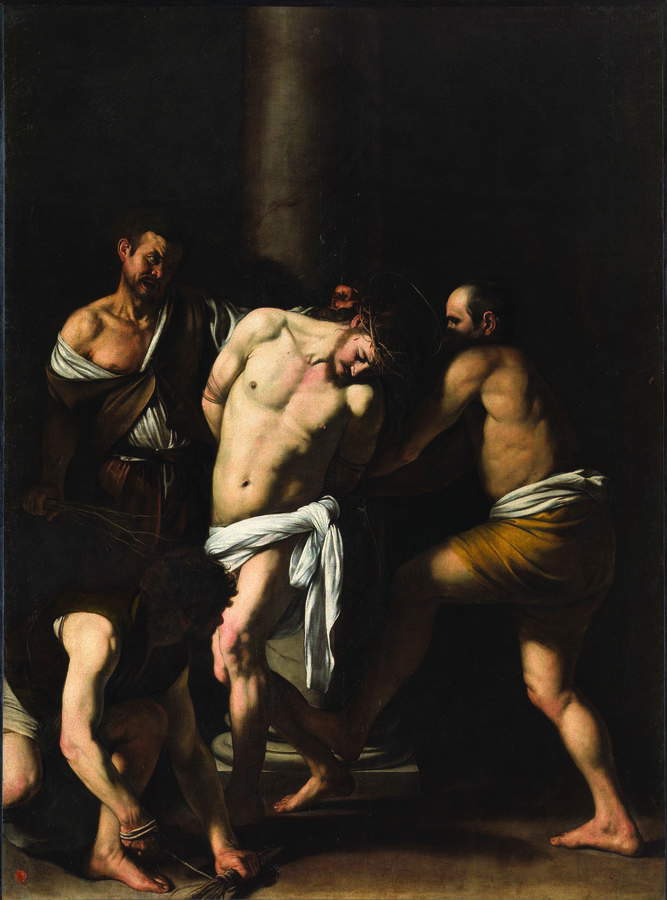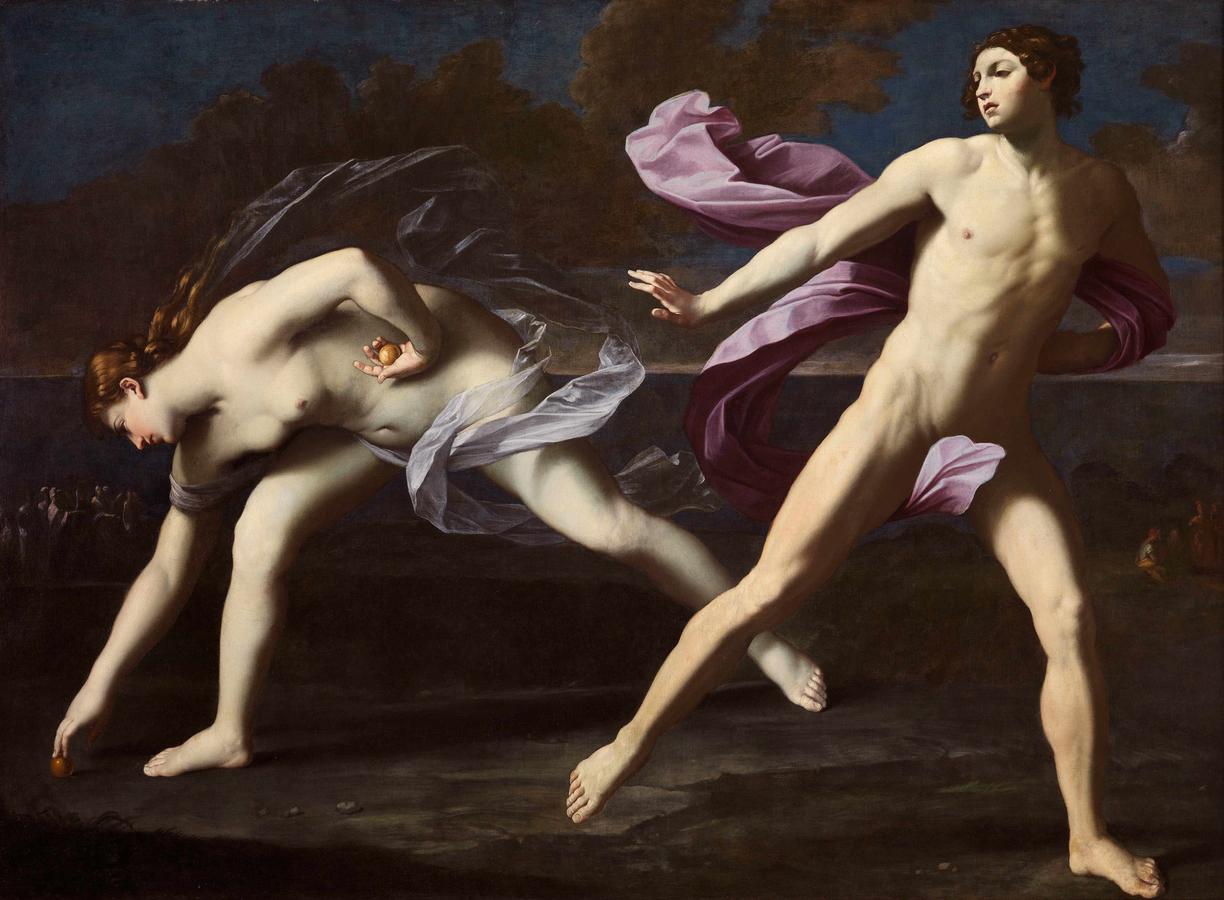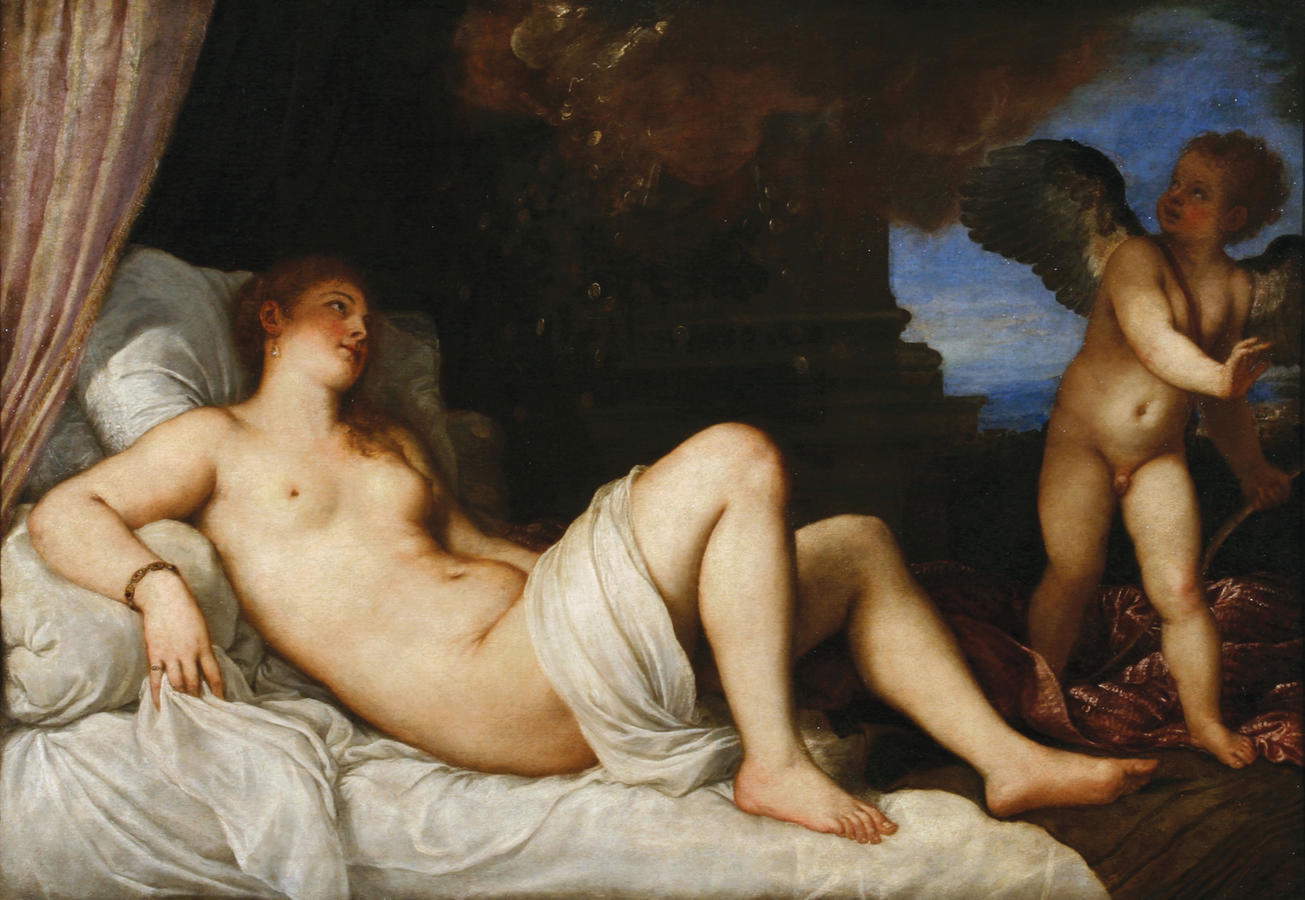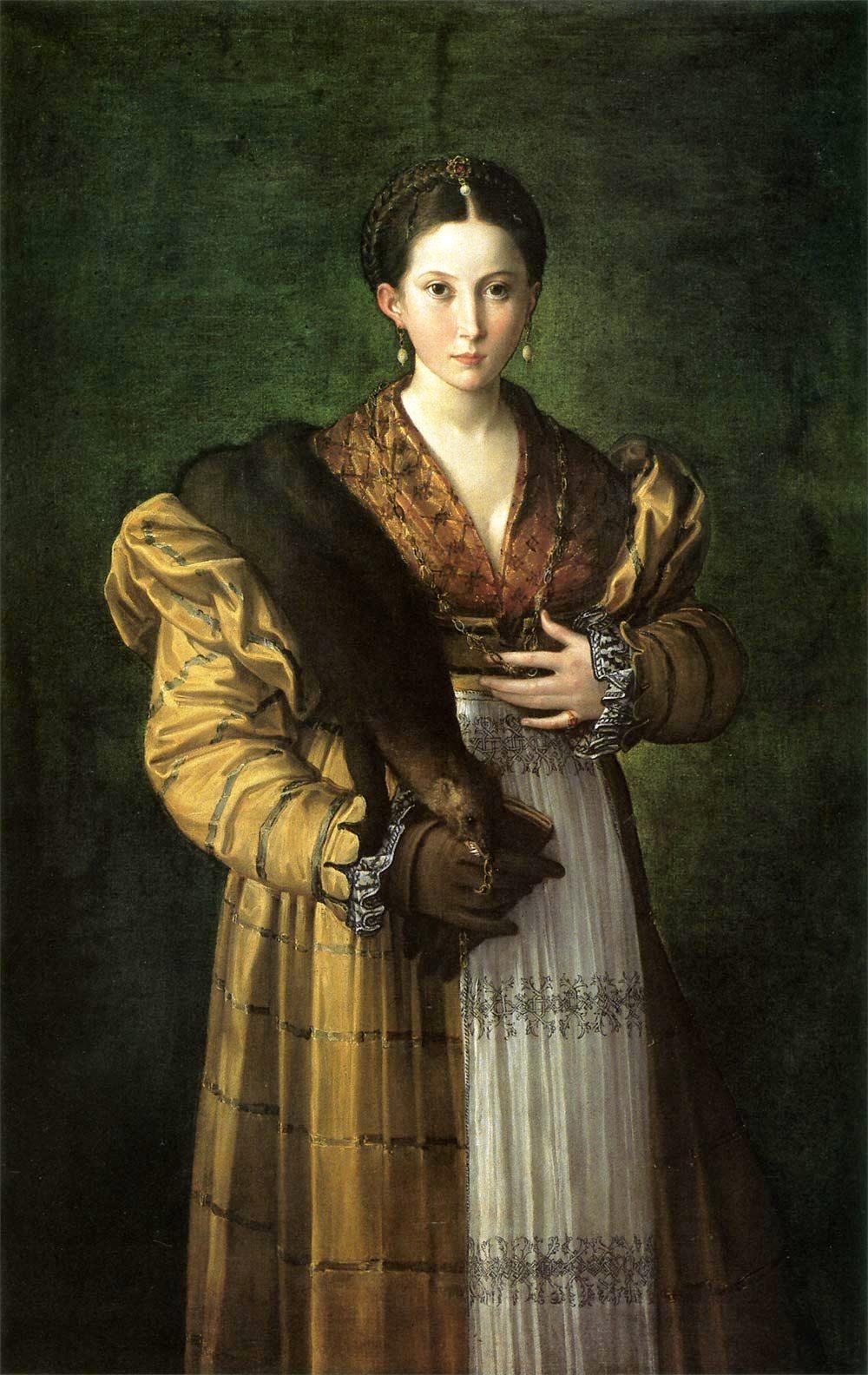Unholy loans: the National Museum of Capodimonte loses its jewels for four months. Caravaggio included
While in these hours there is an argument over the loan of a work by Raphael, the Portrait of Leo X, which will temporarily leave the Uffizi to reach Rome, where it will be exhibited at the maximostra on the Urbinate for the 500th anniversary of his death, Naples is the scene of an event that would deserve far more incendiary passions and infinitely more heated tempers than those that are fueling the debate around Raphael: the Museo Nazionale di Capodimonte has shipped to Texas not one, not two, not three, and not even ten masterpieces from its collection, but some 40 pieces, which have already left for the States to be displayed in an exhibition at the Kimbell Art Museum in Fort Worth, entitled Flesh and Blood. Italian Masterpieces from the Capodimonte Museum. The scientific reasons for the project? None forthcoming! With the usual barrage of superlatives, the event is presented by the Texas museum as “an incredible gathering of paintings” that will allow the lucky visitor to take “a journey through the most significant artistic achievements of Italian Renaissance and Baroque painting” and be “captivated by the greatest talents of the 16th and 17th centuries.”
Obviously no idea other than to move three dozen or so masterpieces en bloc from Naples to Fort Worth, almost as if they were parcel post, much to the chagrin of what Francis Haskell has written and rewritten in his texts about the reasons why an exhibition should be supported. To read the list of works that will be leaving the museum for three months is to convulse hard: Caravaggio’s Flagellation, Artemisia Gentileschi’s Judith and Holofernes, Parmigianino’sAntea, Titian’s Danae, Guido Reni’sAtalanta and Hippomenes, Annibale Carracci’s Pietà , José de Ribera’s St. Jerome and the Drunken Silenus, and then the best of the Neapolitan school of the 17th century, from Battistello Caracciolo to Massimo Stanzione via Bernardo Cavallino. A sad and serious hemorrhage in total silence. A traveler who, from March 1 to June 14 (this is the duration of the Kimbell exhibition), feels like going to the National Museum of Capodimonte, will find it desolately devoid of its jewels. Of those paintings that anyone would expect to find on going to visit it, the ones that are reproduced in thousands of tourist guides, advertising brochuresî, magazines, and newspapers extolling the wonders of the Neapolitan collection.
But that’s not all: this is not the first time the Capodimonte Museum has deprived itself of some of its best-known and most considerable paintings. A selection quite similar to the one to be displayed in Fort Worth had already left the halls of Capodimonte to be shown in Seattle, from October 17, 2019 to January 26, 2020, in an exhibition with the same title as the one in Texas. It was missing Caravaggio, but there was Raphael, there was Guido Reni, there was Artemisia Gentileschi, there was Parmigianino, there was Lorenzo Lotto, there were the Caravaggesques. One only has to scroll through the list of works on loan to realize how the institute has bled itself dry, and continues undaunted in its intentions. Even then, same script: dozens of works of art from Italy to the US without anyone saying anything. What about the risks involved in transportation? What about the balance and unity of the collection? And the Neapolitan public (as well as foreign tourists) deprived of the opportunity to visit entirely one of Italy’s most important museums?
 |
| Michelangelo Merisi, Flagellation of Christ (1607; oil on canvas, 286 x 213 cm; Naples, Museo Nazionale di Capodimonte, on deposit from the church of San Domenico, property of the Fondo Edifici di Culto - Ministero dell’Interno) |
 |
| Guido Reni, Atalanta and Hippomenes (c. 1620-1625; oil on canvas, 192 x 164 cm; Naples, Museo Nazionale di Capodimonte) |
 |
| Titian, Danae (c. 1545; oil on canvas, 120 x 172 cm; Naples, Museo Nazionale di Capodimonte) |
 |
| Parmigianino, Antea (c. 1530; oil on canvas, 135 x 88; Naples, Museo Nazionale di Capodimonte) |
All this, moreover, is happening without the museum and its director Sylvain Bellenger spending a single line to provide reasons (which we obviously eagerly await: the public has a right to know, down to the minutest detail, what such an operation is due to). One might expect the museum to close for rearrangements or restorations, and then the departure en bloc of the pearls of the collection might seem a little more justifiable. But Capodimonte turns out to be regularly open for visits. The only notice on the home page of the museum’s website, below the large banner advertising the Fort Worth exhibition, is one informing visitors of the absence of Caravaggio’s Flagellation as of Feb. 20. And immediately after that is another informative notice that, sympathetically, warns that “the serious shortage of staff, now not only administrative but also scientific, exposes Capodimonte in 2020 to the greatest crisis in its history,” and that the employees, despite the obstacles, are active “with pride and passion to carry on their work every day.” So, to a situation of understaffing, you respond by sending the most important masterpieces on tour around the world? But what kind of publicity is it for the museum to welcome visitors without showing them the works for which they perhaps even set out for Naples? What kind of image will it give of the institution and the city when, for a full four months, every single person who walks through the museum’s entrance has to be told by the visiting officers that the Flagellation, theAntea, the Danae, theAtalanta and Hippomenes, heads of works printed in all art history books and manuals, have ended up on the other side of the ocean for an exhibition whose sole purpose is to show works from the National Museum of Capodimonte? Is the remedy to the National Museum of Capodimonte’s “greatest crisis in history” a tour of the collection’s most important pieces? And if there is a quid pro quo (it is after all unimaginable that Capodimonte has not negotiated some benefit in return), how big and important will it ever be that it must be reciprocated by the absence of forty works for so long?
Of course, our position is not animated by an opposition regardless: if theAntea were to leave for a fine exhibition on Parmigianino aimed at increasing knowledge about the Emilian painter, there would be nothing to say. If Ribera’s works were sent across the border for a serious and reasoned exhibition on the Neapolitan Baroque, there would be little to object to. The same can be said for when Capodimonte sent several works by Luca Giordano to Paris for the major exhibition on the Neapolitan painter held at the Petit Palais: the level of the exhibition was high and the occasion justified the temporary deprivation. Here, however, there would seem to be no reason for it: a picky selection that, at least to read from the presentation on the Kimbell’s website, would like to hold together the theme of Farnese collecting and that of the local Baroque. Which is to say everything and nothing: it almost seems like an excuse put in place simply to give some semblance of legitimacy to an operation that looks more like the best of a rock band than a scholarly project (and this is not an impression: on the Seattle exhibition website the words “The best of the best” really did appear). The problem is that, for rock bands, compilations are usually released when bands run out of ideas. Are we to imagine that Sylvain Bellenger has no better ideas either? Or that he thinks he will get good publicity by moving works from the collection he is called upon to care for, protect, and enhance? And how can a collection be valorized if the best pieces are moved here and there to the detriment of those who would like to visit Capodimonte admiring not say the collection in its total integrity, but at least those ten or twelve masterpieces that perhaps for many are worth a visit?
Then there would also be a discussion about the transparency of the operation. In the press releases section on the Capodimonte press office page there is nothing about the Seattle exhibition, and for the Fort Worth one there is only a statement from the American museum. Nothing has come out in the national press or, if it is something has come out, it has gone so under the radar that no one has noticed. Tell us, Sylvain Bellenger, if you would like to be remembered as the director who cheerfully shipped masterpieces from the Capodimonte collection to America by stripping your museum. Let us know, the director of Capodimonte, if there are any good and rational reasons that could change our minds about such a long absence of such important works. Try, the director of Capodimonte, to put yourself in the shoes of a visitor to your museum, and ask yourself whether it is normal and reasonable to empty it out in this way. Tell us, finally, whether in his opinion the museum is a logistics company, or whether it is that “permanent, non-profit institution, at the service of society, and its development, open to the public” that ICOM established by definition in 2007.
Warning: the translation into English of the original Italian article was created using automatic tools. We undertake to review all articles, but we do not guarantee the total absence of inaccuracies in the translation due to the program. You can find the original by clicking on the ITA button. If you find any mistake,please contact us.




























